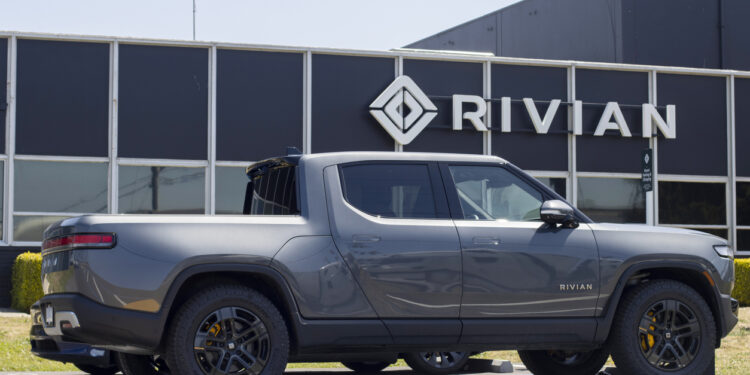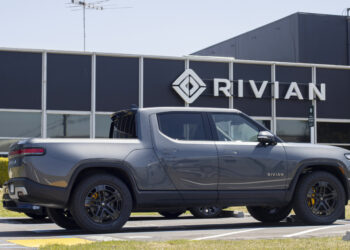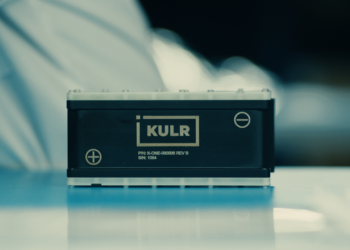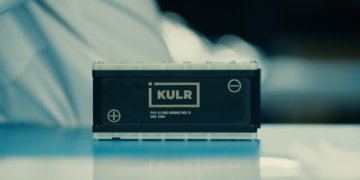Navigating the Future of Rivian with VW Partnership and Strategic Shifts
Morgan Stanley’s (MS) latest note on Rivian (RIVN) outlines a notable shift in the company’s strategy, moving away from its initial goal of becoming a leading standalone electric vehicle (EV) manufacturer. This pivot towards potentially becoming a Tier 1 supplier and a software-defined vehicle (SDV) tech partner is supported by a new partnership with Volkswagen (VW), prompting a reassessment of Rivian’s future prospects and stock valuation. This article delves into the details of this strategic shift and its implications for Rivian’s long-term success.
A Challenging Journey in the EV Market
Since its initial public offering (IPO), Rivian has faced a series of financial challenges, burning through over $20 billion in its ambitious quest to rival Tesla. Despite these efforts, the EV market’s landscape has changed, with even Tesla scaling back its incremental capital investments. The partnership with VW offers Rivian a lifeline, potentially allowing it to escape the high costs and complexities of manufacturing EVs.
Morgan Stanley’s updated model for Rivian now assumes that the company’s upcoming R3 vehicle, slated for production in FY28, will be manufactured with a partner like Volkswagen. This shift implies that Rivian might avoid the significant expenses associated with establishing a new production facility in Georgia, focusing instead on its existing plant in Normal, Illinois, for its R1, EDV, and R2 models.
Financial Adjustments and Improved Outlook
Morgan Stanley has revised its price target for Rivian’s stock from $13 to $17, reflecting higher anticipated gross margins and lower operational expenses. The report projects a positive gross margin of just over 7% by FY25, with the first positive EBITDA expected by FY27, aligning with Rivian’s own guidance. Additionally, the forecast for auto cash burn through the end of the decade has been reduced from $12 billion to $8.7 billion, a key factor driving the increase in the price target.
The updated outlook also presents a narrower risk/reward scenario for Rivian, with less dramatic potential upsides and downsides. The bear case target has increased from $3 to $7, while the bull case target has been slightly adjusted from $33 to $31.
The VW Partnership: Opportunities and Uncertainties
While the partnership with VW presents a significant opportunity for Rivian, it also brings several uncertainties. The mechanics and long-term outcomes of the joint venture (JV) remain unclear, and further disclosures are anticipated by year-end. For Rivian to justify its current valuation and be considered a strong investment, the company must demonstrate continued capital discipline, improved earnings visibility, and a credible path to generating $1 billion to $2 billion in free cash flow (FCF) by the end of the decade.
Key Considerations and Strategic Shifts
Morgan Stanley’s analysis underscores several key considerations for Rivian’s future:
- Shift from Manufacturing to Supply: Any strategy that distances Rivian from the burdens of manufacturing its own vehicles could be beneficial. The partnership with VW aligns with this perspective, positioning Rivian more as an auto and tech supplier rather than a pure EV manufacturer.
- Questioning the Need for a New Plant: The decision to potentially forgo the planned Georgia plant reflects an assessment that the current global capacity for EV production might be sufficient.
- Skepticism Towards JVs: Historically, joint ventures in the automotive industry have faced challenges due to insufficient long-term commitment from the involved parties. Rivian and VW will need to navigate these complexities carefully.
Revised Forecasts and Valuation
Morgan Stanley’s updated forecasts for Rivian include increased production and delivery estimates for FY24, with deliveries expected to reach 54.5k vehicles, up from 51.9k previously. Total revenue for FY24 has been revised upwards to $5.0 billion, driven by higher deliveries and average transaction prices (ATPs). The FY25 revenue forecast remains largely unchanged at $5.2 billion.
Gross profit margins are expected to improve significantly, with a forecasted -22.6% margin for FY24, up from -23.5% previously, and a positive 7.1% margin for FY25, a notable increase from the prior estimate of 2.4%. EBITDA projections for FY25 have also improved, now expected to be -$1.4 billion compared to the previous forecast of -$1.9 billion.
In terms of valuation, Morgan Stanley’s new price target of $17 values Rivian at 4.1 times its estimated FY30 base case EBITDA of $4.2 billion. This valuation is split into $14 for the automotive business and $3 for software and services. The base case assumes Rivian will sell 316,000 units annually by 2030, with a total vehicle parc of 0.8 million.
Conclusion: Navigating a New Path
Rivian’s journey from an ambitious EV manufacturer to a potential tech supplier and SDV partner marks a significant strategic shift. The partnership with Volkswagen offers a path to reduce manufacturing burdens and capitalize on Rivian’s technological strengths. However, the success of this pivot will depend on effective execution, continued financial discipline, and the ability to navigate the complexities of the joint venture with VW.
As Rivian charts this new course, the company’s ability to adapt and thrive in the evolving automotive landscape will be critical. Investors will be closely watching for proof points of capital discipline, earnings visibility, and progress towards generating substantial free cash flow in the coming years.
You might like this article:AVGO’s Strategic Moves and 10-for-1 Stock Split: Paving the Path for Continued Growth











